This post may contain references or links to products from one or more partners of our parent company and/or subsidiaries of our parent company. For more information, visit this page.
Updated February 17, 2022
So you’re looking into engineered bamboo flooring pros and cons. Well, you’ve come to the right place!
Below, we’re going to dive into all the pros and cons of engineered bamboo flooring, from sustainability to durability, installation, cost, and beyond. Plus, we’ll give you a sneak peak at some of the best engineered bamboo flooring brands on the market.
But before anything else, we have to come out and say it: engineered bamboo flooring is pretty freaking cool. For one thing, bamboo isn’t actually a hardwood—it’s a woody perennial grass. Did you know grass floors were a thing? Well, now you do.
And as most gardeners know, bamboo is a total thorn in the side of beautiful gardens everywhere. Why? It grows like crazy and has a habit of spreading everywhere. But what you might not know: that’s one of the reasons it’s such a sustainable flooring option! Oh man, we’re learning all sorts of stuff today.
Ok, ok—so how the heck does a hollow grass become flooring, you ask? Good question, and we’ll get into that more later. In fact, we’ll help you sort through all of the (often confusing) details of this amazing type of flooring while we go through all the pros and cons of engineered bamboo flooring. Let’s jump in!
First off: is all bamboo flooring engineered?
Nope! Just like other wood flooring types, you can find bamboo as solid tongue-and-groove planks or as an engineered option (sometimes called “bamboo laminate”).
As with any engineered wood, you have a plywood or fiberboard core (giving it a sturdy structure) and a thin strip of real wood—or, in this case, bamboo—on top.
That thin strip is called a veneer, and post-installation, it’s virtually impossible to tell the difference between solid and engineered bamboo flooring.
And while solid planks are susceptible to temperature changes and humidity (resulting in the boards expanding and contracting), thanks to a sturdy core, engineered bamboo flooring can withstand these fluctuations. That’s why it can be installed in just about any room in the house.
The pros of engineered bamboo flooring
We’ll start with the pros because… well, they’re more fun to talk about! Plus, there aren’t too many cons (but we’re getting ahead of ourselves here).
Engineered bamboo flooring is super sustainable
Bamboo flooring is, without a doubt, one of the most eco-friendly types of flooring around. Not only is it an organic material, but it only takes about 5 years for bamboo to mature—compared to 50-ish years for most tree species.
Additionally, bamboo self-regenerates when cut at the stalk—the plant will grow a new shoot (much to the chagrin of the gardener who doesn’t want it around). The roots stay in place and so does the soil—unlike devastating clear-cutting practices that can cause soil erosion and deforestation.
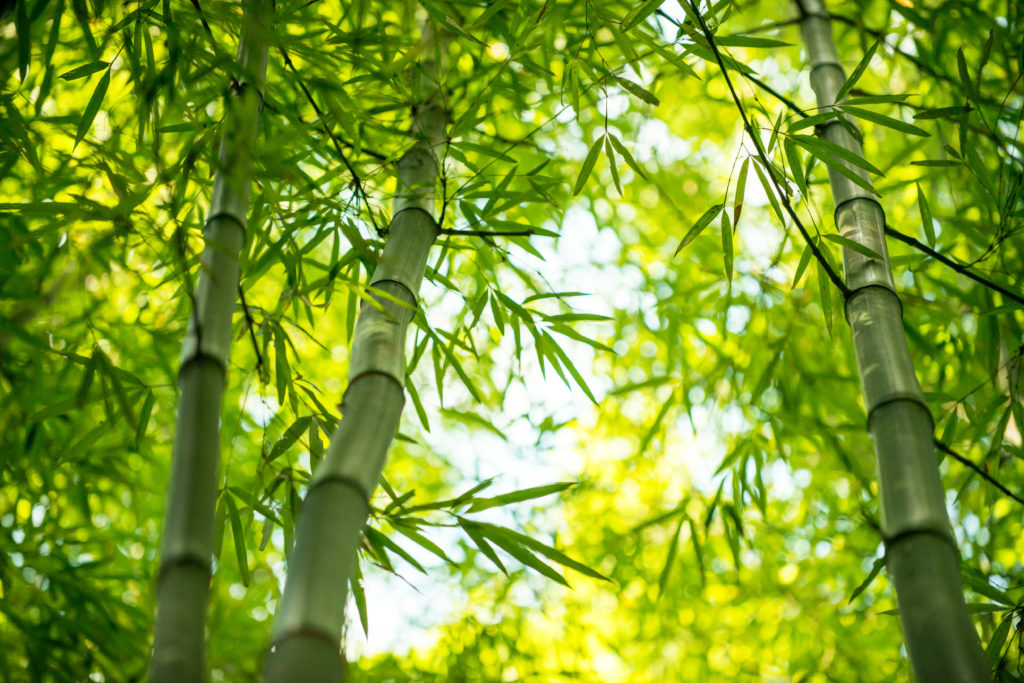
Bamboo flooring is definitely an eco-friendly choice—when we choose this woody grass over hardwood, trees get a break from harvesting and potential depletion—especially the exotic species. You can’t argue with a feel-good green choice.
Important note: not all bamboo harvesting practices are environmentally-minded. In order to ensure sustainability with your bamboo flooring, look for a Forestry Stewardship Council (FSC) Certificate, which indicates sustainable forestry practices. Your local flooring experts are the best resource for finding sustainable bamboo products and eco-friendly manufacturers.
Best Brands of 2024
Engineered bamboo is available in multiple varieties
As with solid bamboo flooring, engineered bamboo comes in 3 different varieties—each with its own unique look and advantages.
1. Vertical bamboo flooring is created by stacking bamboo strips on top of each other to create a uniform, striped look. Some might even say this look is closest to a typical hardwood.
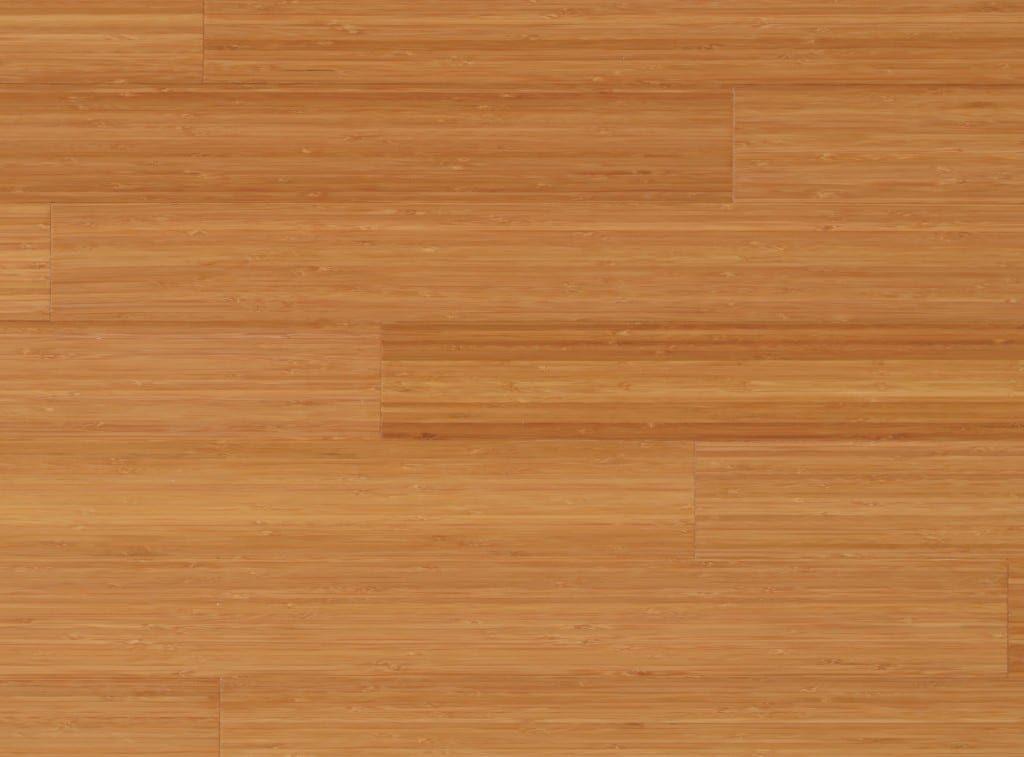
2. Horizontal bamboo flooring is the most classic bamboo look—you can see the material’s stripes and knuckles thanks to horizontal layering of the bamboo strips.
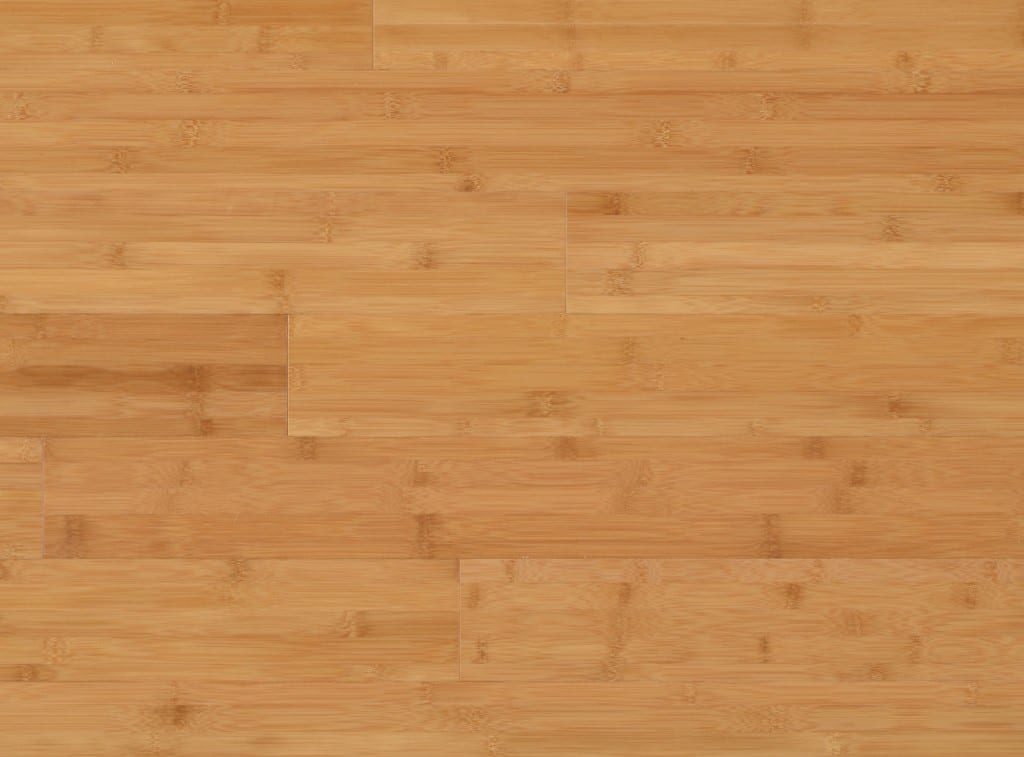
3. Strand-woven bamboo flooring is the strongest of the three. In this variety, bamboo stalks are shredded into fibers and mixed with resins. The resulting interlocked fibers make strand-woven bamboo crazy durable. It’s the most expensive of the three options—but like Mom always said, “Honey, you get what you pay for.”
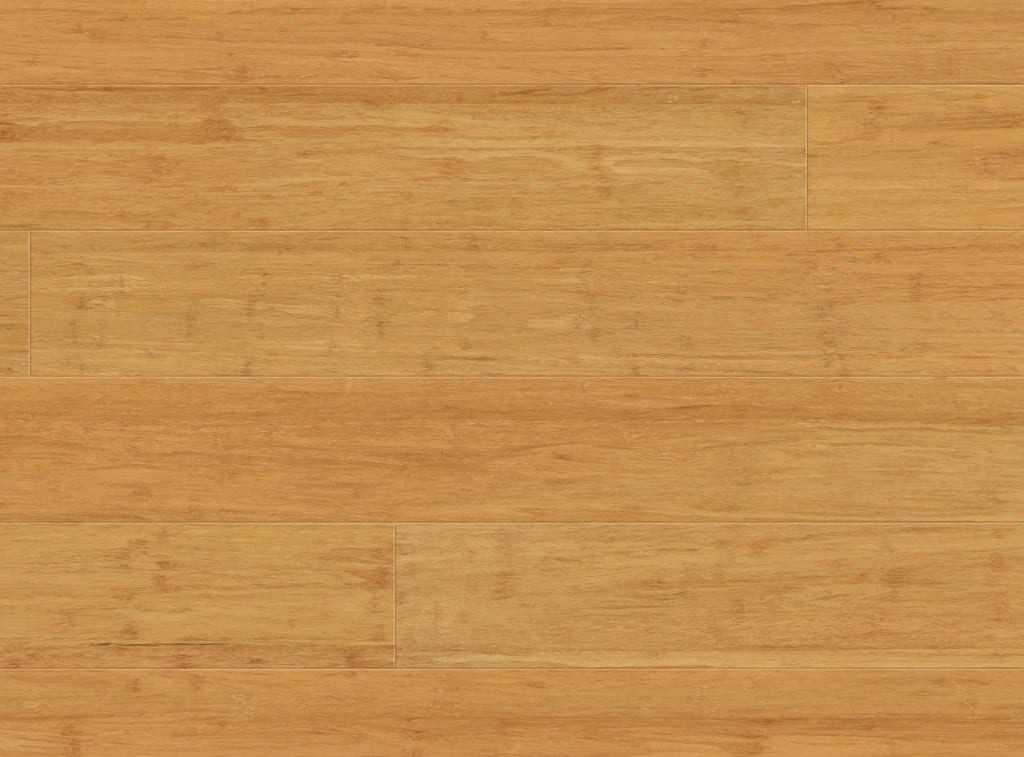
Engineered bamboo flooring can also be carbonized
The image that comes to mind when you hear “bamboo flooring” is probably a light-colored material with a contemporary vibe. While that’s definitely an attractive option (and one we love), it’s not the only option available in today’s market.
That’s right—if you’re aching for a darker, richer look, you can even find carbonized engineered bamboo flooring! It’s not just solid bamboo planks that can be carbonized; you can easily find this material as an engineered option as well.
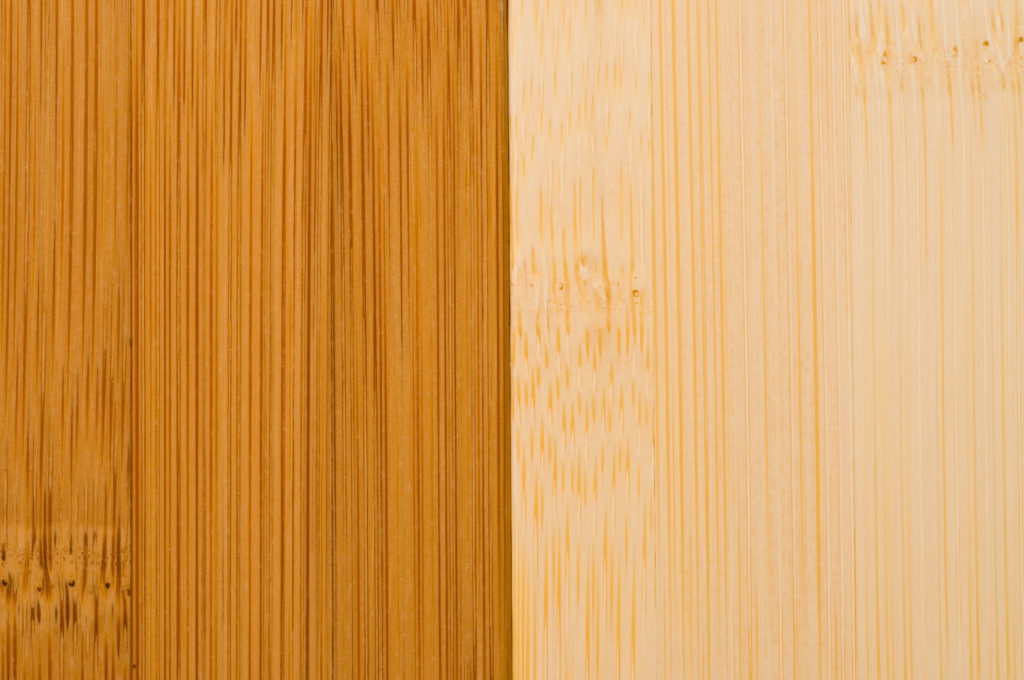
Engineered bamboo flooring is incredibly durable
As we mentioned before, engineered bamboo won’t expand or contract like solid wood planks will so it can be installed in just about any room. Engineered bamboo flooring is typically recommended for the living room, dining room, bedroom, and even high traffic areas.
And if you want the most durable flooring around, strand-woven engineered bamboo flooring might be the right choice for you. When measured on the Janka Scale, strand-woven bamboo rates twice as hard as oak! That’s a serious bragging right. Plus, vertical and horizontal bamboo floors are rated equally as strong as oak.
Additionally: some engineered bamboo comes with a special plasticate wear layer above the veneer for added protection.
And it can be refinished, too!
As with hardwood, one of the big items on the engineered bamboo pros and cons list involves refinishing. Luckily, engineered bamboo is the same as engineered hardwood: depending on the thickness of the veneer, it can be refinished.
How thick? Well, experts recommend a veneer thickness of ¼ inch for maximum durability. Plus: the thicker the veneer, the more times it can be refinished.
Unfortunately, there’s a ton of conflicting information about all types of flooring, and engineered bamboo is no exception. The Spruce, for instance, claims that engineered bamboo can’t be refinished—but they’re talking about the type with a wear layer. Again: even Cali Bamboo points out that their engineered products can, in fact, be refinished.
But we get it: if you’re worried about rough toddlers or pets denting and scratching your new floors, engineered bamboo might not be the best choice. For even more durable options, check out the difference between bamboo flooring vs. laminate for a side-by-side comparison.
Installation is easy with click-together flooring planks
We’ll say it— click-together flooring is awesome. If you’re not familiar, this setup—also called “click-lock” or “snap-together” flooring—relies on a high-tech system of grooves to literally snap planks together. You don’t even have to attach it to the subfloor.
The resulting surface (called a “floating floor”) requires much less time to install, making installation much cheaper (and a potential do-it-yourself flooring project).
Of course, there are advantages and disadvantages of floating floors and their installation. Our advice? If you’ve never tackled a project like this, find a flooring dealer near you to get some help. After all, learning how to replace flooring is not an easy task.
Whatever you choose—no judgment—we would be remiss if we didn’t recommend that you unpack and leave your engineered bamboo boards in their new home for 5-7 days prior to installation so they can acclimate to the room.
Bamboo flooring has natural antimicrobial properties and termites don’t like it
Allergy sufferers, imagine a flooring that has natural antimicrobial properties. Yep, it’s true—arguably one of the most interesting things about bamboo is that the fibers of the plant naturally repel mildew, mold and even pollen!
The fibers of the bamboo plant are also inhospitable to termites! Take that tip to the flooring store near you, Florida! #NoTermitesHere
The cons of engineered bamboo flooring
Let’s face it, even the best things in life have downsides. Ice cream has calories, sports cars have bad fuel economy, Game of Thrones had Season 8… you get the picture. Engineered bamboo flooring is no different. Here are some engineered bamboo flooring cons for you to consider.
Some engineered bamboo flooring is susceptible to water damage
Even though strand-woven is the best bamboo flooring when it comes to durability, it’s still an organic product—and that means it is not waterproof. In fact, very few organic floors are (though some claim otherwise).
But don’t despair! There are tons of great waterproof flooring options out there. If you’re searching for flooring that can survive the occasional aquatic situation, we suggest looking into different types of tile. Additionally, many of the best vinyl flooring options on the market are totally waterproof.
Engineered bamboo’s quality depends on its manufacturing process
Since many bamboo products—engineered flooring included—come from overseas, standards and regulations may differ from those in the United States.
One of the hottest issues in the bamboo flooring pros and cons debate is the use of adhesives that contain formaldehyde during manufacturing. These can release toxic volatile organic compounds (VOCs), which are harmful to those who come in contact with them.
The good news: not all bamboo flooring is made with these compounds. Ask questions. Do your research. As previously mentioned, the Forestry Stewardship Council is a great resource to determine sustainable practices and manufacturing standards. And of course, we highly recommend you talk about bamboo flooring options with your local flooring retailer.
Plus (and you didn’t hear it from us), local flooring stores usually carry higher-quality products than box stores and unnamed “liquidators”.
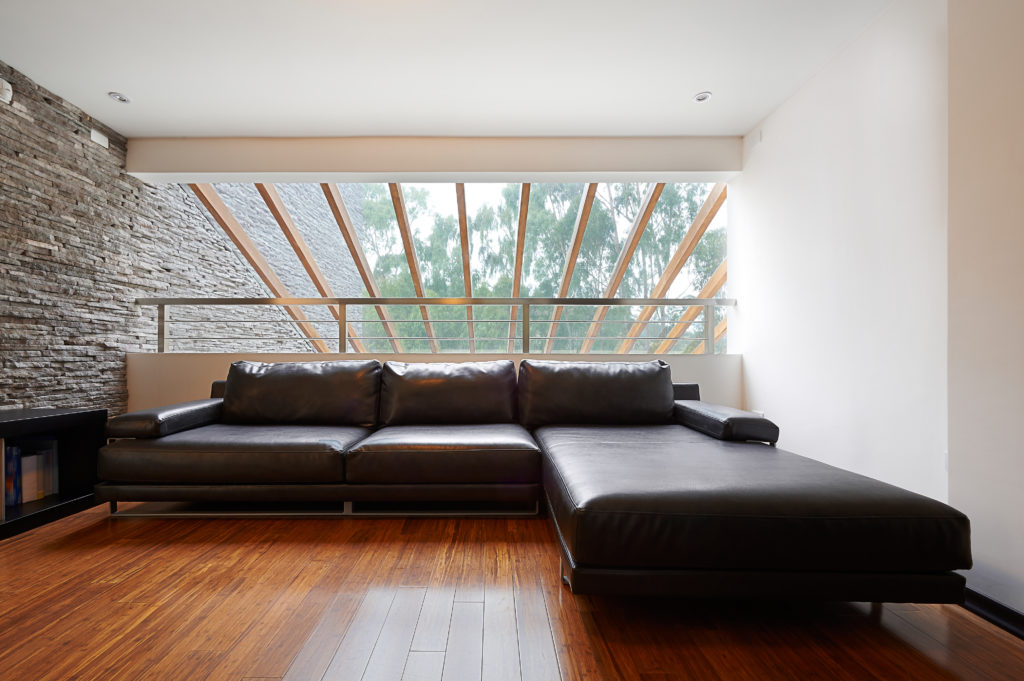
Engineered bamboo can (sometimes) be more expensive than solid bamboo
Bamboo can cost all the way from $2 to $10 per square foot, depending on what you buy. In some cases, engineered bamboo is a bit less expensive than solid bamboo. But depending on the product, it can also be more expensive.
That being said, one of the pros of engineered bamboo: it’s cheaper to install, thanks to its click-together mechanism. Want a more accurate price quote? Talk to a flooring dealer near you.
Best Engineered Bamboo Flooring Brands
It may come as a surprise that there aren’t a ton of companies that produce engineered bamboo flooring. But that didn’t stop us from digging through to bring you 3 of the best brands on the market!
Let’s take a look at some of the best engineered bamboo flooring brands.
#1. Proximity Mills
Starting at number one on our list: Proximity Mills!
Proximity Mills uses strand-woven Moso bamboo (which has some of the densest fibers of any bamboo species) and a high-density core to create ultra-durable engineered bamboo flooring.
And they don’t use that cheap, young bamboo either. All of the bamboo plants they use to manufacture are at least 6 years old, so their fibers have time to toughen up and mature. For our money, you can’t go wrong with Proximity Mills bamboo.
#2. Plyboo
Plyboo is another top engineered bamboo flooring brand, and they’re focused on creating environmentally friendly flooring. They even use a completely formaldehyde-free adhesive that’s made of soy (seriously) for their bamboo products. They use a variety of construction techniques, and even carry wall paneling to give your home that forest-y feel.
They’ll cost you a bit more than a lot of other engineered bamboo flooring, but that’s usually the gambit with all environmentally conscious products—don’t let it dissuade you!
#3. Ambient
Ambient was actually one of the first companies in the world to specialize in strand-woven bamboo flooring, way back in 2005 (which is basically the dark ages—can you believe we didn’t even have Twitter back then?)
As one of the pioneers of modern bamboo flooring, Ambient gets the stamp of approval from us as one of the best engineered bamboo flooring brands. Plus, they even offer a line of Eucalyptus flooring—that’s a first!
Engineered bamboo flooring pros and cons: conclusion
As cool as it is, engineered bamboo flooring has pros and cons to consider. That said, as far as we see it, the advantages of this amazing floor really do outweigh the disadvantages.
Whatever your needs, we recommend that you talk to a flooring dealer about engineered bamboo flooring and any other types of flooring you might be interested in—they’re the ones with all the knowledge, and they can help you price out and complete your flooring project with ease.
For more information on all things flooring, check out:
- A Guide to Peel-and-Stick Carpet Tiles (& 9 Reasons They’re Amazing)
- Vinyl Flooring Pros and Cons: What You Need to Know
- Carpet vs. Laminate: Which is the Right Floor for You?
- The Best Cork Flooring Options & 11 Reasons They’re Awesome
- Tile vs. Laminate: The Pros and Cons
- Pergo Reviews 2020: What Buyers are Saying
- The Pros and Cons of Cork Flooring
- Laminate vs. Hardwood Floors: Which are Better?
About The Author

Kimberly Severance
March 17, 2020
Best known as a therapeutic horseback riding instructor and mom to a 3-year old sassy dachshund, Kim enjoys writing and a good research project. She also loves a good DIY project—probably inspired by growing up in an old Connecticut colonial.
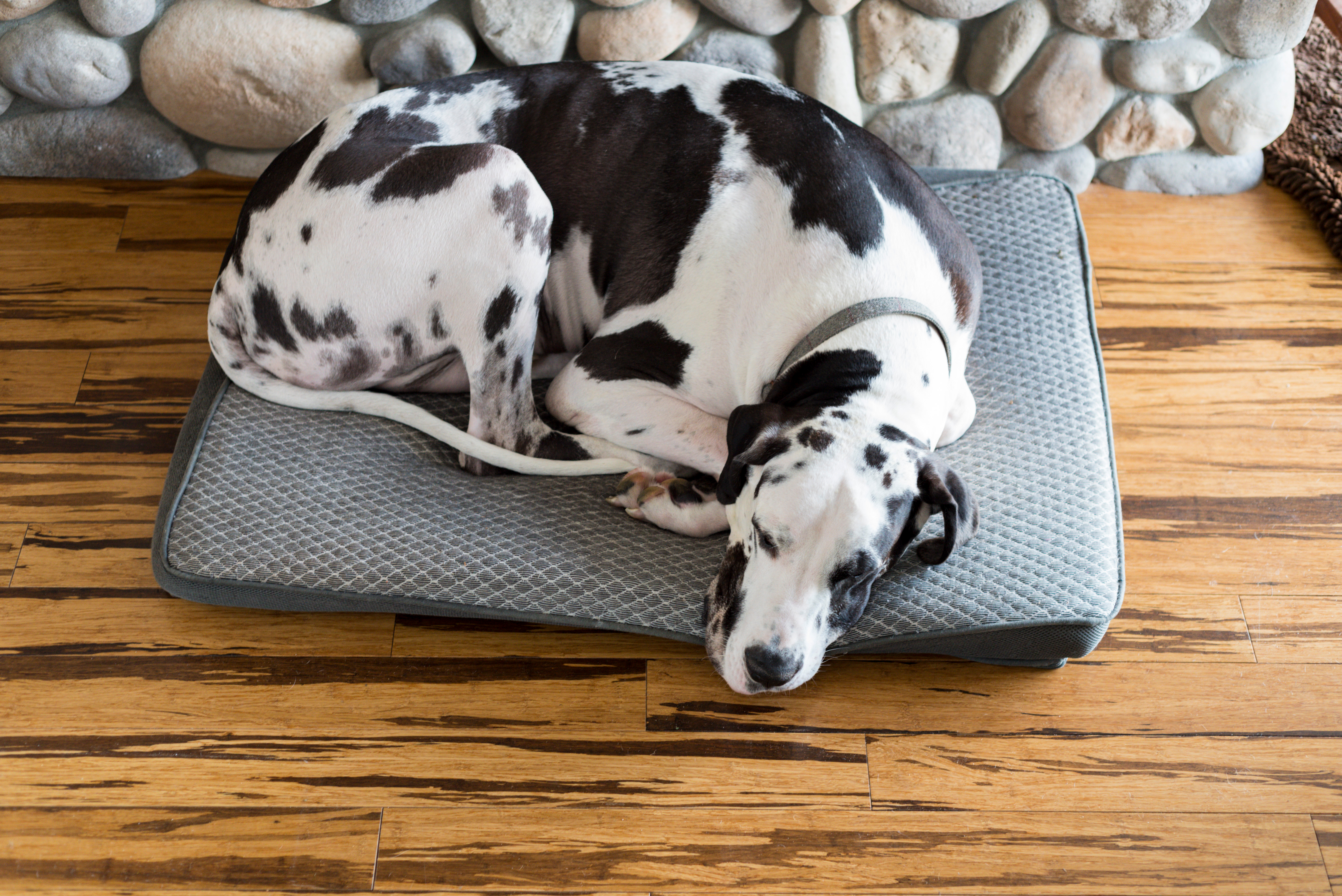
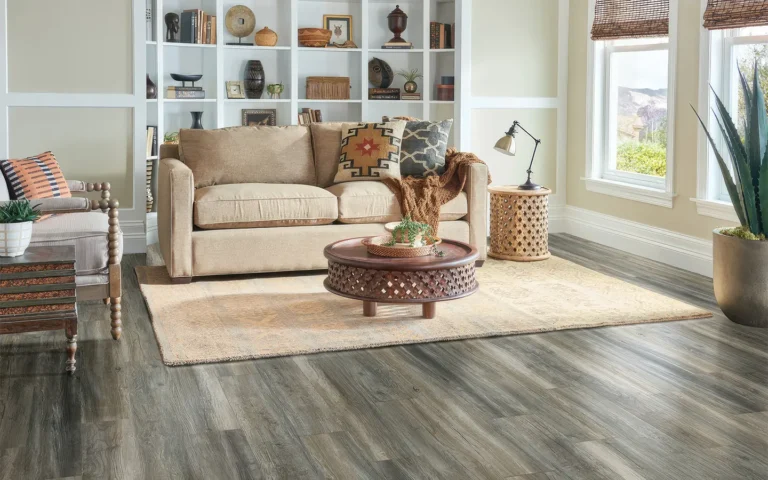
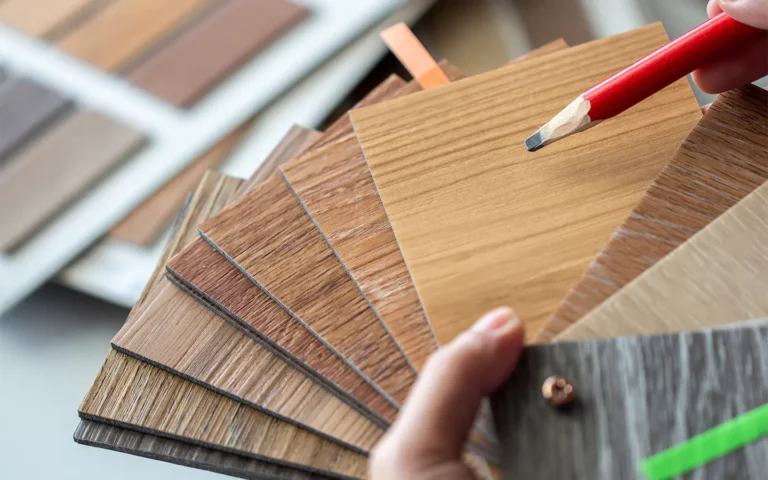

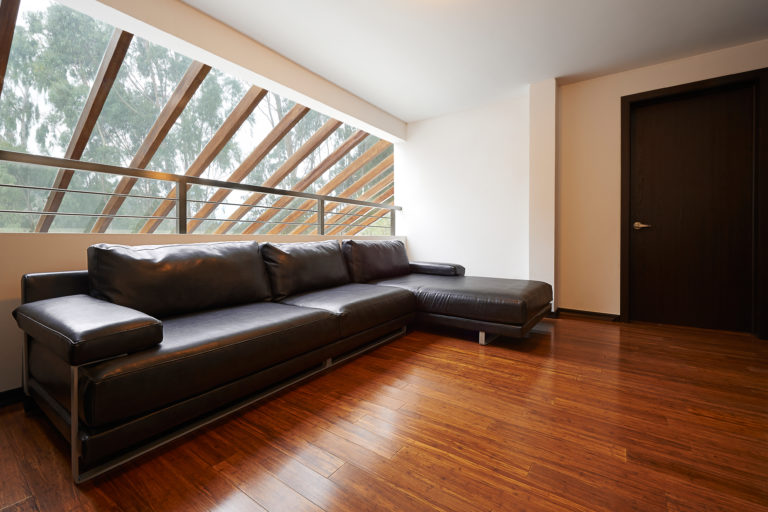

5 comments
True
This was a great article – very detailed, informative and thorough!
Thanks so much!
Daras Keough
Finally, an article on bamboo flooring that is clear and concise. Thank you. P.S. GOT season 8 was stinky, wasn’t it?
Kenobia
Thank you. This is exactly what I needed to know. The options for flooring are dizzying!
Terry L.
Kimberly – You are an excellent writer! Hard to find these days. These articles were clear, concise, organized, informative and fun to read! Thank you!
Terry L.
You are an excellent writer. These articles were clear, concise, organized, informative and fun to read! Thank you!